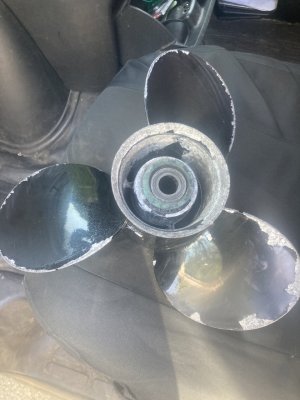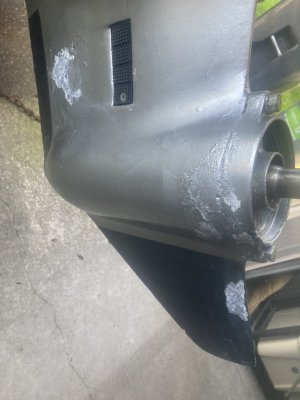I may be wrong or misinformed, but when I bought an aluminum boat I did a ton of research on causes of aluminum corrosion because my boat was going to be in the chuck year round.
With regard to your corrosion issue, and please correct me if I'm wrong, given that your boat lives on a trailer and out of the water, whatever sacrificial anodes you have installed will be of use only when submerged. In other words, if the corrosion is advancing while the boat is on the trailer, it is not likely to be electrolysis causing your corrosion. Air is a poor conductor of electricity, while salt water is a pretty good conductor of electricity, hence the need for the sacrificial anodes.
Having said that, I would bet 2012 CAD Dollars to Honeys Doughnuts that your issue is caused by contamination of the aluminum at some point.
If a person uses a steel wire brush when
cleaning aluminum, iron molecules will be deposited into the aluminum causing an aggressive reaction between the two. Sanding disks and other surface preparation tools can be a common cause as well. When welding aluminum, the only suitable brush to be used is a stainless brush that is new or has never been used on anything but clean aluminum. Same goes for sanding disks, etc... The issue can also be caused by the composition of the filler or paint that was used to compete the repair, which may contain elements No Bueno with aluminum.
Some rules of thumb I consider accurate.
1) Electrolysis really only happens under water
2) Atmospheric corrosion (oxidation) can be eliminated by removal of oxygen, like applying a thin coat of fluid film when not in use. Also is normal on bare aluminum and stops once the surface is fully oxidized
3) Galvanic Corrosion (dissimilar metals) is the most common cause of aluminum corrosion, and the easiest form to create (and most difficult to stop) when repairing aluminum.
If I was to guess at the root cause (just a guess), I would guess the following happened:
At some point in the distant past the leg was repainted, perhaps because the paint had worn off in a few areas. The preparation before painting involved some sanding or wire brushing which introduced some foreign metal into the surface of the aluminum. Since then, you have been fighting a battle to stop the ongoing corrosion, without much success.
If this is in fact the cause of your corrosion problem, you will need a chemical solution to solve it. The leg will need to be media blasted, then acid dipped, then epoxy primed, then painted with paint specifically for aluminum outdrives. Aluminum begins oxidizing rapidly (like 1 hour) , so once the acid dip is complete, it will need to be primed quickly.
Note: Given the state of your leg, you can't really make it worse, so have at it and try to have fun learning the process.
Hope this is helpful.




